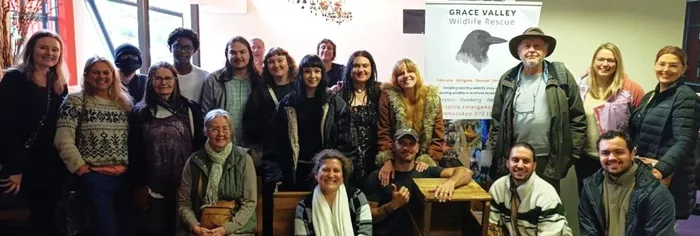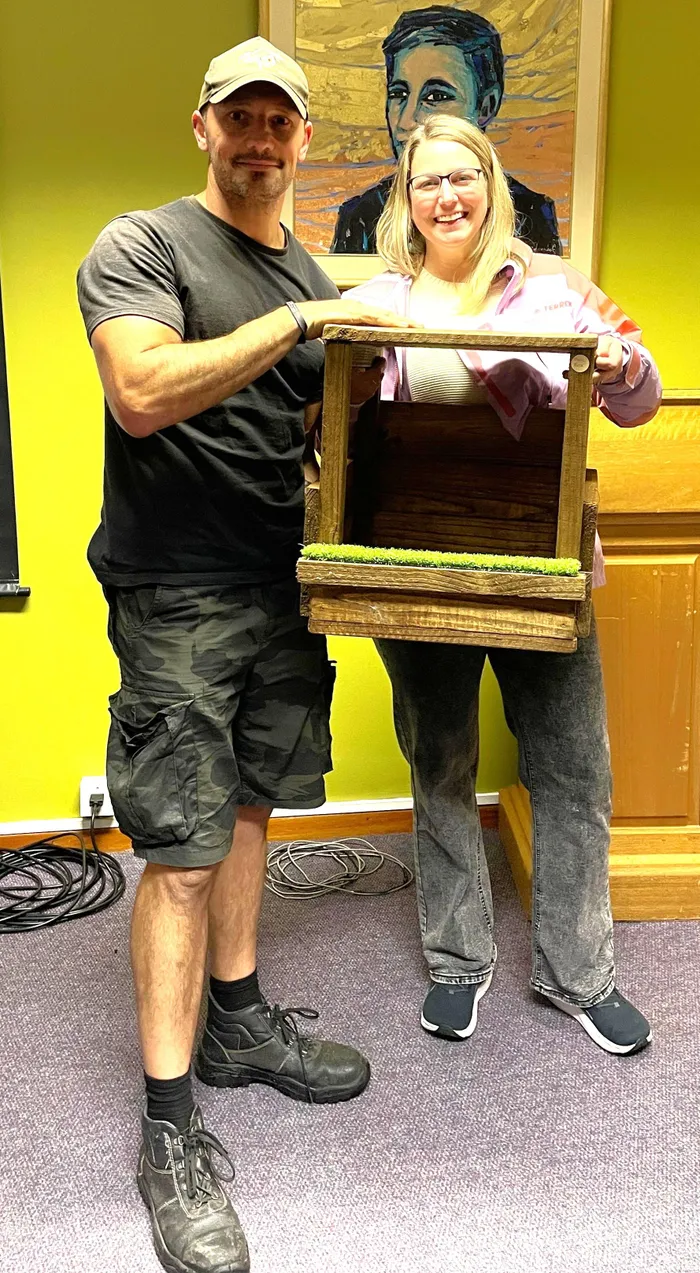Living in harmony with urban wildlife

Shireen Freeman from Grace Valley Wildlife Rescue and Mike Amira, pictured in the middle, with Pinelands residents who came to their Urban Wildlife presentation.
Image: Supplied
Wildlife responder, Shireen Freeman, is encouraging residents to slow down and enjoy the presence of urban wildlife.
On Sunday, June 24, Ms Freeman from Grace Valley Wildlife Rescue and Mike Amira from the Owl Box Man shared information on urban wildlife with about 40 residents at the South African Centre for the Netherlands and Flanders in Pinelands.
Ms Freeman runs the Grace Valley Wildlife Rescue in the Overberg region, though she assists people throughout the province, putting them in touch with their nearest permitted wildlife rehabilitation centre.
“As a wildlife responder, I help healthy wildlife stay in the wild and ensure that wildlife needing care gets to permitted species-specific rehabilitation centres,” she said.
Ms Freeman, originally from Pinelands, reminisced on her childhood days when she would walk around the neighbourhood, peering into hedges to spot chameleons, though these days, most of those hedges had been replaced with high walls and electric fences, and seeing a chameleon had become a rare stroke of luck, she said.
Ms Freeman noticed that gardens in the area had changed; some had been paved over or covered in fake grass, which led to fewer insects and, consequently, fewer birds and other wildlife that rely on them. Ms Freeman is also concerned about the widespread use of poisons.
“They are harmful not just to 'pests' but also to wildlife like owls and other raptors, and even to our pets. There’s no such thing as safe poison, and once you’ve seen the devastating effects of secondary poisoning, you would never use it again,” she said.
Ms Freeman said each wild creature, from tiny geckos to great owls, plays an important role in our ecosystems.
“They have as much right to be here as we do,” she said.
Mr Amira, from Durbanville, founded his Owl Box Man organisation 12 years ago.
“I regularly assist the Kogelberg Biosphere in specific projects and am the official supplier of Raptor boxes to the Grace Valley Haven rescue,” he said.
Mr Amira said the two most common owls that residents may come across are the Spotted Eagle Owl and the Barn Owl.
“The Spotted Eagle Owl is the one that you will see within many residential areas, especially becoming active now as we head towards July, which is their breeding season,” he said.
He said the Spotted Eagle Owl can be seen during the day and night time, mostly near playground equipment. While he said that Barn Owls are nocturnal and can be seen closer to a rural setting or where the urban infringement meets the veld.
“Again, another reason why greenbelts and reserves are so important within our suburbs and working spaces,” he said.
Mr Amira’s tips for anyone who comes across the Spotted Eagle Owl are to respect them from a distance and enjoy them.
“You will often find Spotted Eagle Owls on the floor at around five weeks old when they leap from their raptor box or natural nest. This is completely normal,” he said.
He urged anyone not to pick them up as the owlet’s parents are close by.
Mr Amira shared the following information when dealing with animals:
- – Respect animals from a distance; Keep dogs on leads - at all times when on public roads, verges, and in parks/open spaces; Keep cats inside at night; Prevent/avoid the use of poisons.
- – Drive slowly.
- – Pick up all litter - especially bread tags, fishing line, human hair, bottle rings, and helium balloons. Maintaining a clean and safe suburb will encourage wildlife.
Important animal contact numbers in emergencies:
- For garden birds and hadedas, contact Tweet Tweet Bird Rescue via Whatsapp at 078 517 7061.
- For garden birds and waterfowl, contact Urban Wild Conservation at 079 050 4796.
- For raptors and blue cranes, contact The Owl Orphanage in Velddrif at 072 040 5465.
- For owls, blue cranes and other species, contact the Kogelberg Biosphere Wildlife Rescue and Training Centre on 060 861 5653.
- The SPCA Wildlife unit at 021 700 4158/9.
- Southern African Foundation for the Conservation of Coastal Birds(SANCCOB) at 021 557 6155.
- Grace Valley Wildlife Rescue at 072 130 2208.
- Owl Box Man at 072 375 0134.

From left are Pinelands resident, Jean Sleigh, Shireen Freeman from Grace Valley Wildlife Rescue and Taryn Slabbert who won a raffle prize.
Image: Supplied

Founder of Owl Box Man, Mike Amira and Kristen Muir who won a Spotted Eagle Owl box in the raffle.
Image: Supplied
Related Topics: